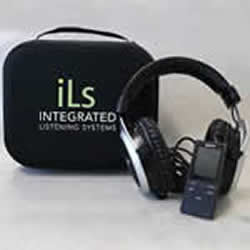A New Twist on a “Therapist’s Tool Box”
I often hear therapists mention their professional “tool box” and the need to access a variety of techniques in client sessions. tool boxA quick Google search showed numerous books that offer “tools” and an assortment of implements for busy therapists; computer/smartphone/tablet applications claim to support therapists’ work with clients, and a plethora of workshops teaching "tools" for therapists to use such as EMDR, EFT, DBT, Reiki, mindfulness, hypnotherapy, somatic focusing, guided meditation, couples relational counseling, and more. Therapists are required to keep abreast of trends, theories, research and application.
Trauma Treatment in Today’s World: A Call for Papers
SPT magazine offers its call for papers for the Fall 2015 issue that will focus on Trauma Treatment from a Global Perspective.
The Baby is in the Shadow: Why Study Prenatal and Perinatal Patterns?
Working with families and babies who have had overwhelming experiences requires a certain skill base. I have been working in the prenatal and perinatal realm for over 15 years, over 20 years as a body worker, and over 25 in maternal and child health. In the last 14 years, advances in the fields of interpersonal biology, epigenetics, fetal origins, trauma resolution, affect regulation, neuroscience, and attachment have created more acceptance that babies have experiences in utero, during birth, and postpartum (neonatal). My work is about healing moms, babies, and adults with early trauma; prenatal and perinatal therapeutic approaches focus on giving babies the best possible start.
Using the Two-Chair Process: For Helping Babies and Families
The “two-chair” process is a remarkably effective, gentle and safe way to support new families. Popularized in the late 1960s by Fritz Perls, MD (1893-1970) as part of his Gestalt therapy, the method was expanded by Robert Hall, MD (1934-) based on Hall’s study with polarity therapy founder Randolph Stone, DO, DC, ND (1890-1981). The present-day manifestation of the two-chair process also reflects the influence of Peter Levine, PhD (1942-), who studied with Stone and Hall. For a complete description of the method, see Dancing with Yin and Yang (2013) by John Chitty, which contains an extensive 80-page, highly detailed chapter of the two-chair process.
The Prenatal and Perinatal History: A Vital Component of Effective Holistic Practice
For the past 25 years, I have educated professionals in prenatal and perinatal psychology. I have found that the potential connection between their clients’ current therapeutic issues and their prenatal and perinatal experience is often a rather mysterious terrain for most practitioners. More practitioners now recognize that these early experiences are important and have appreciation for “prenatal stress” and “birth trauma” as significant, but fewer feel confident to systematically identify, assess, and work with this developmental period and its long-term repercussions in their practice.
Embodied Compassion: An Interview with Michael Shea, PHD
Michael Shea, PhD, educator, author, and Biodynamic Craniosacral Therapist explains that for healing to happen both the client and the practitioner "symbolically return to the undifferentiated wholeness of the original fluid body in the early embryo while staying in present time." Through embodiment practices, Shea says, we have the capacity to maintain our interconnectedness throughout our lives when we connect with our fluid nature, our blood, and our heart.
Embodying Embryology: Accessing Our Original Potential
My first inkling of early trauma emerged while receiving bodywork. While previous therapy was helpful, touching early prenatal and birth traumas hidden beyond my conscious awareness required including my body in therapy. Massage leading to emotional release began the process. This was followed by dance/movement psychotherapy where I learned to notice and express what was held in my tissues. I was fascinated by memories of feeling unwelcomed and unwanted, losing a twin, being plucked out of the womb with forceps from a mother too drugged to remember if she had held me after birth, or to realize the wrong baby was brought to her three days later.
Prenatal and Perinatal Psychology: Rediscovering Our Primary Relationship of Self
For over 30 years, the field of Prenatal and Perinatal Psychology (PPN) has taken the dynamic understanding of human development deeper by studying how babies’ earliest experiences in the womb, during birth and bonding, and as newborns shape and set in motion fundamental life patterns. These core patterns may be life-enhancing or life-diminishing.
The findings from PPN revolutionize our notions of who babies are, who we are, what is going on during this primary period of human development, and how these very early experiences form babies’ core foundations at every level–physical, emotional, mental, relational and spiritual. PPN offers a unique lens of exploring this developmental period from the baby’s point of view.











